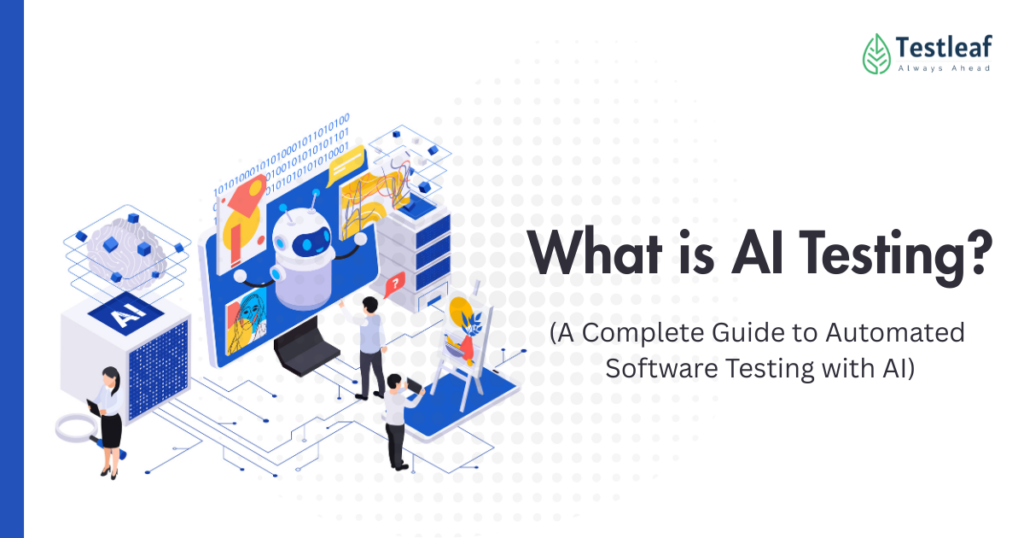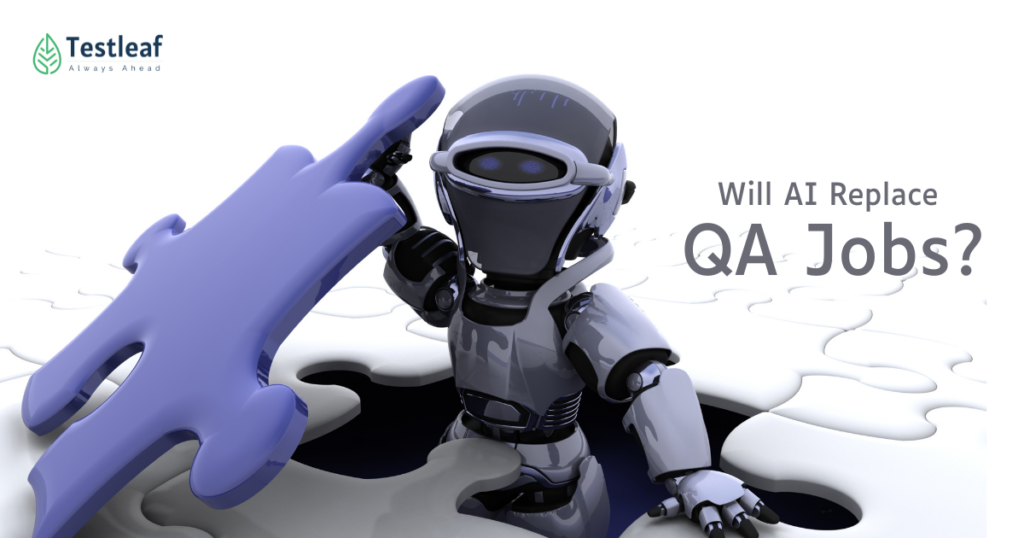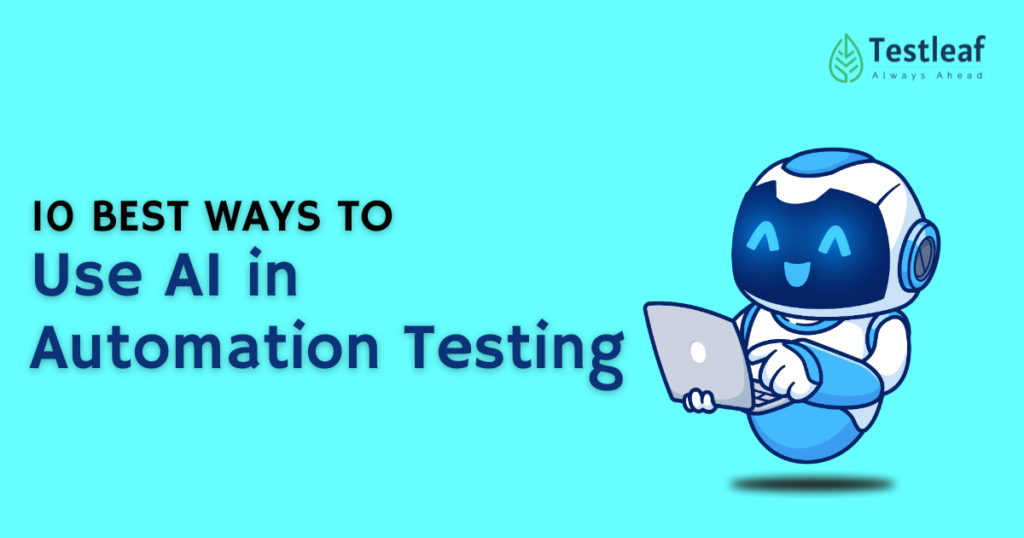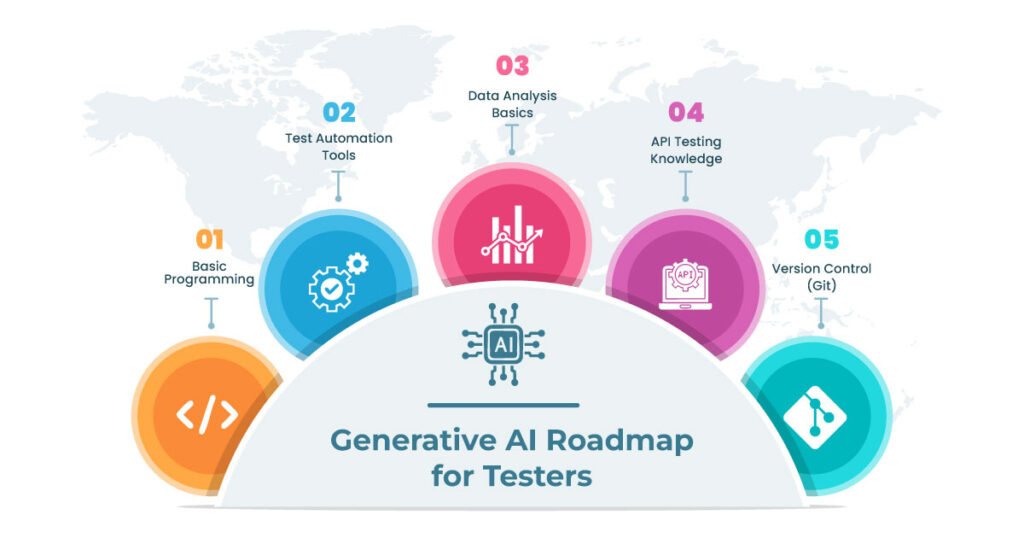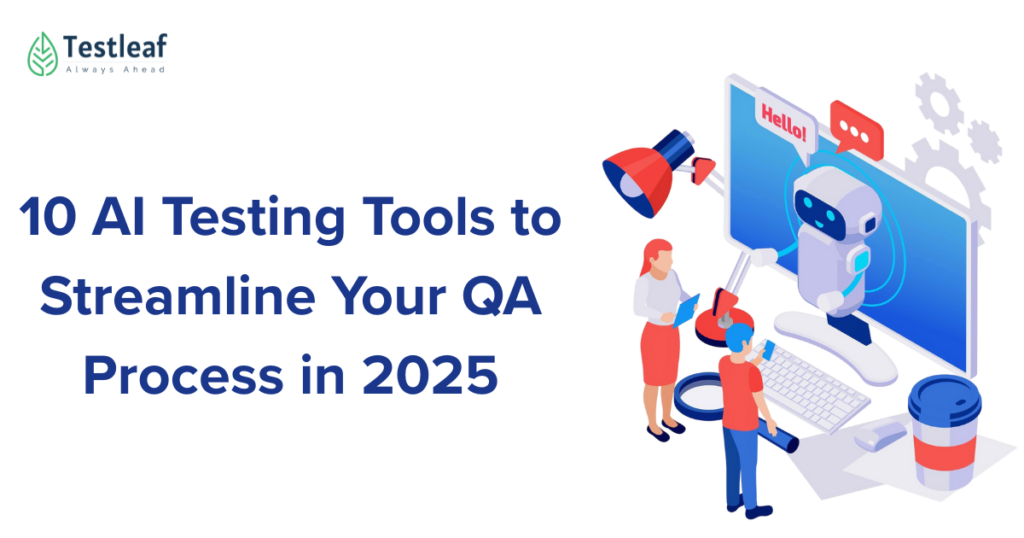The software development lifecycle (SDLC) is evolving rapidly, with AI and machine learning (ML) leading this transformation, particularly in software testing. While traditional testing methods are effective, they often struggle to keep pace with the speed and complexity of modern applications. This is where testing for AI and ML-driven automation plays a crucial role, revolutionising how QA teams detect defects, optimise test coverage, and accelerate releases.
In this context, we will explore how AI and ML are reshaping software testing, the key benefits they offer, and the future of intelligent test automation.
The Role of AI and ML in Modern Software Testing
1. Smarter Test Case Generation
Generating manual test cases can often be a time-consuming and error-prone process. AI-powered testing tools analyse application behaviour, user interactions, and historical test data to automatically generate optimised test cases. This not only enhances efficiency but also ensures broader test coverage, including edge cases that humans might overlook.
2. Self-Healing Test Automation
One of the biggest challenges in test automation is maintaining scripts when the application’s UI changes. The use of AI in testing allows self-healing capabilities, where machine learning algorithms detect UI changes and automatically adjust test scripts. This approach reduces maintenance tasks and significantly decreases the occurrence of unreliable tests.
3. Enhanced Defect Prediction and Analysis
In AI and ML, previous defect data can be analysed to predict the locations of future bugs. By using predictive analytics, QA teams can focus testing efforts on high-risk areas, improving efficiency and reducing escaped defects.
4. Visual and UI Testing with AI
Traditional automation struggles with visual validation, but AI-driven testing leverages computer vision to compare screenshots, detect layout shifts, and ensure UI consistency across devices. This is particularly useful for responsive and cross-browser testing.
5. Intelligent Test Execution and Optimisation
Using AI, test cases can be prioritised according to risk factors, changes in code, and data from previous failures. Instead of running redundant tests, ML algorithms optimise test suites to execute only the most critical scenarios, saving time and resources.
6. Natural Language Processing (NLP) for Test Scripting
The NLP-powered testing feature allows QA engineers to write test cases in plain English, and AI automates the process of converting them into executable scripts. This lowers the barrier to automation, allowing even non-technical testers to contribute.
The Rise of Testing for AI Systems
Just as AI is being used to enhance software testing, there is a growing need to test the AI systems themselves. AI models, particularly those in machine learning and deep learning, require specialised validation strategies:
Key challenges in testing AI systems include:
- Unpredictable outputs based on probabilistic models
- Bias and fairness issues in decision-making algorithms
- Lack of clear test oracles (i.e., it’s hard to know what the “correct” output should be)
- Evolving models that change behaviour over time.
To address these challenges, testers need to implement:
- Data validation: Ensuring input datasets are clean, balanced, and relevant.
- Model performance testing: Evaluating precision, recall, and accuracy metrics.
- Robustness testing: Checking how models behave with noisy or adversarial data.
This makes testing AI a highly specialised and emerging skill set within the QA domain.
Popular Tools Using AI in Testing
Many modern testing tools now incorporate AI features:
- Testim – AI-based functional test automation
- Applitools – Visual AI testing for UI validation
- Mabl – Self-healing and intelligent regression testing
- Functionize – AI-powered NLP test creation
- TestCraft – Codeless test automation enhanced by AI
These platforms simplify adoption for teams transitioning from traditional to intelligent testing frameworks.
Unlocking the Advantages of AI and ML in Software Testing
- Faster Testing Cycles – AI reduces manual effort, enabling quicker test execution and feedback.
- Higher Accuracy – Minimises human errors in test creation and execution.
- Reduced Maintenance – Self-healing tests cut down script updates when UIs change.
- Enhanced Test Coverage – AI generates a wider variety of scenarios, including complex edge cases.
- Cost Efficiency – Lowers manual testing costs and speeds up time-to-market.
The New Testing Frontiers Opened by AI/ML
1. Testing Complex, Self-Learning Systems
Modern applications incorporating AI components (recommendation engines, adaptive UIs) require fundamentally new testing approaches:
Testing the testers: Validating ML model behaviour as it evolves
Bias detection: Automated identification of discriminatory patterns in training data
Feedback loop testing: Ensuring continuous learning improves rather than degrades performance
Example: A financial app’s fraud detection AI must be tested not just for accuracy but for how its decision-making evolves with new transaction patterns.
2. The Rise of Generative Testing
Generative AI is creating revolutionary testing capabilities:
Automated test case through AI: AI generates thousands of relevant test scenarios based on requirements
Self-healing assertions: Tests that adapt validation criteria based on observed system behaviour
Natural language testing: Converting plain English descriptions into executable test scripts
Case Study: A SaaS company reduced test creation time by 70% using AI to generate test variants from user stories.
3. Predictive Test Optimization
ML algorithms now enable:
Failure prediction: Identifying which tests are most likely to find critical defects
Dynamic test selection: Automatically choosing the optimal test suite for each code change
Resource allocation: Test bottleneck predictions and prevention in CI/CD pipelines
Challenges in Adopting AI for Testing
While there are numerous advantages, organisations may face challenges when adopting AI in testing, including:
Initial Setup Complexity – Integrating AI tools requires expertise and training.
Data Dependency – AI models need large datasets to learn effectively.
Cost of AI Tools – Some advanced solutions can be expensive for small teams.
False Positives/Negatives – AI may sometimes misinterpret test results, requiring human validation.
Note:
To overcome these challenges, companies should:
- Start with pilot projects before full-scale adoption.
- Train teams on AI-driven testing methodologies.
- Continuously refine AI models with updated test data.
The Future of AI in Software Testing
As AI and ML continue to evolve, we can expect even more advancements, including:
Autonomous Testing – Fully automated QA processes with minimal human input.
AI-Generated Test Data – Synthetic data creation for better test scenario coverage.
Real-Time Test Analytics – Instant insights into application health and risks.
AI-Augmented Manual Testing – AI assistants that guide testers in exploratory testing.
Conclusion
AI and machine learning are transforming the software testing landscape, making it faster, smarter, and more reliable. From automated test generation to self-healing scripts and predictive defect analysis, testing for AI is no longer optional, it’s a competitive necessity.
Organisations that embrace AI-driven testing will gain a significant edge, delivering higher-quality software at unprecedented speeds. The future of QA lies in intelligent automation, and the time to adopt these technologies is now.
Confused about how to incorporate AI into software testing? Take the first step by exploring the wide range of AI-powered tools available!
We Also Provide Training In:
- Advanced Selenium Training
- Playwright Training
- Gen AI Training
- AWS Training
- REST API Training
- Full Stack Training
- Appium Training
- DevOps Training
- JMeter Performance Training
Author’s Bio:

As CEO of TestLeaf, I’m dedicated to transforming software testing by empowering individuals with real-world skills and advanced technology. With 24+ years in software engineering, I lead our mission to shape local talent into global software professionals. Join us in redefining the future of test engineering and making a lasting impact in the tech world.
Babu Manickam
CEO – Testleaf




